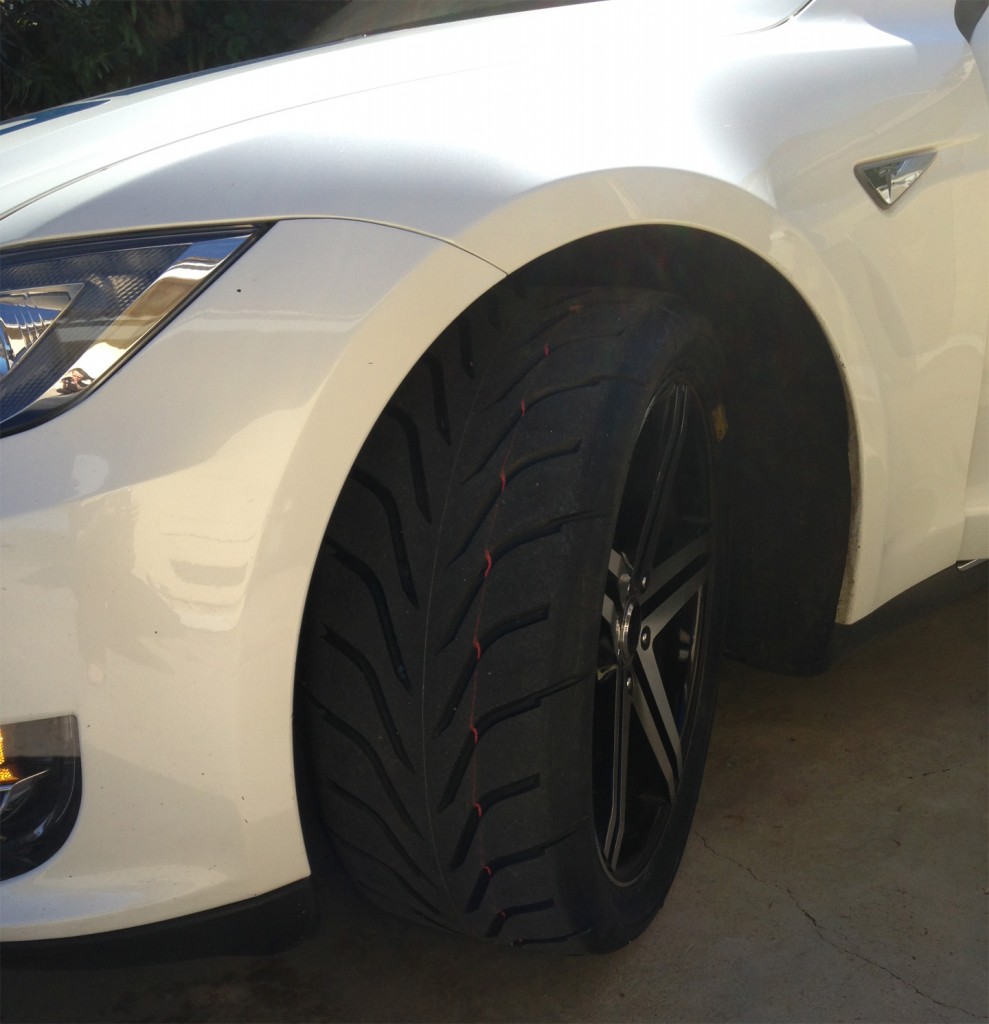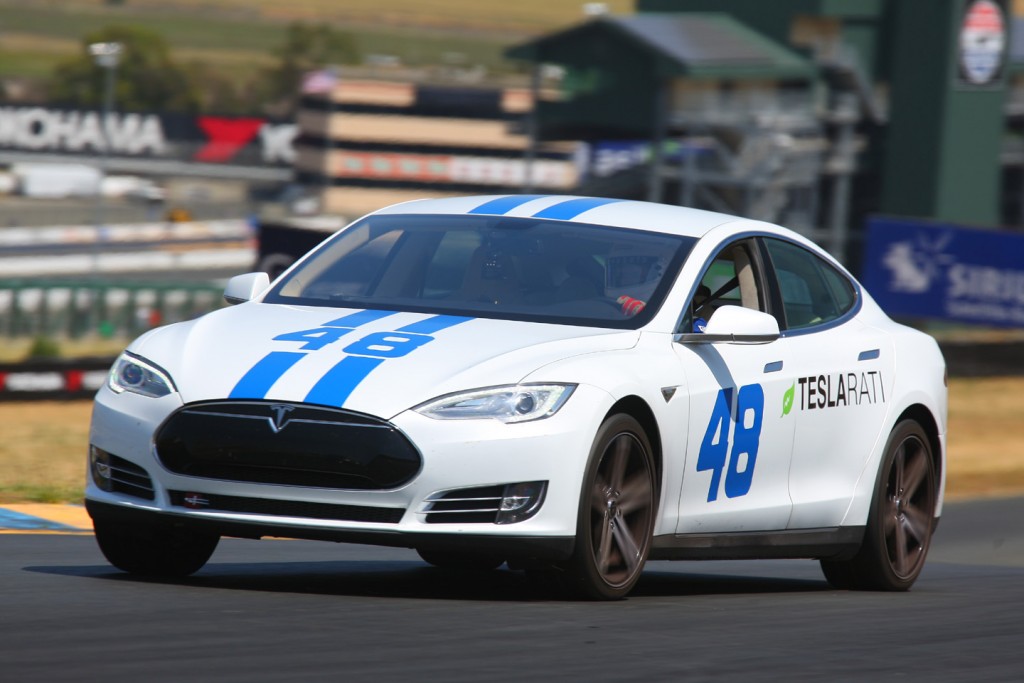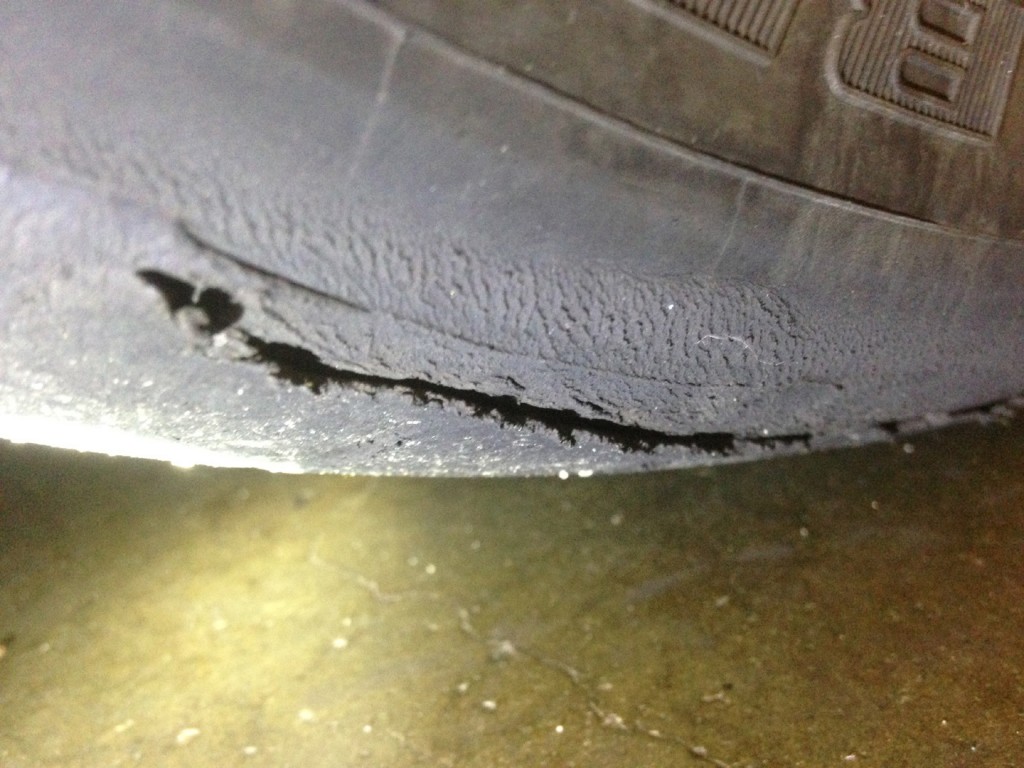Lifestyle
Choosing the Perfect Tesla Model S Performance Racing Tire
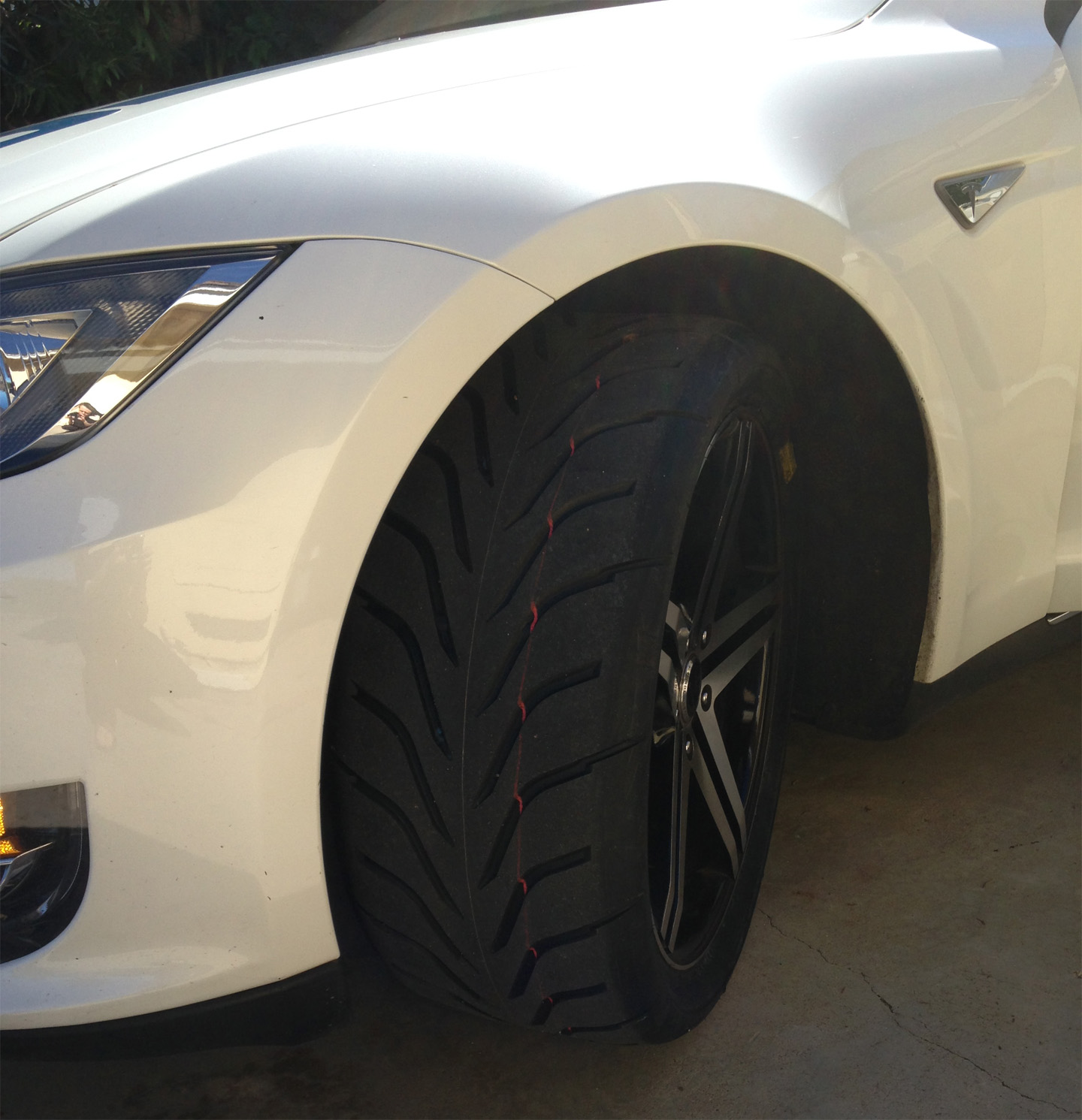
Finding the perfect tire is a never ending pursuit in the world of racing. For those taking their Tesla Model S to the track, the most frequently asked questions are around tires. What tires support the weight of the Model S and performs the best on a race track? Having gone through several tire configurations in our Tesla racing conquests we can now provide some answers to that question.
Your choice of tire really depends on what you are trying to achieve with the Model S. We’ve broken it down to three usage categories as follows:
- If you track your Model S very infrequently (ie. once a year), then any tire will work. Tracking in the beginner’s groups won’t stress your tires since most of the time you’ll be driving at lower speeds while learning racing best practices.
- If you do it frequently and/or do performance driving (usually in the intermediate groups) softer compound performance tires would be your best choice.
- If you are racing your Tesla in the advanced group where ever millisecond counts then racing tires are a must.
We will review performance vs. racing tires in detail, and outline the pros and cons of each.
Performance Tires
Usually found under Performance Summer (Extreme/High/Max) category at retailers like Tire Rack. Our choice of performance tires is, 265/35ZR-20 BFGoodrich G-Force Rival, grade 200. While they very slightly exceed the spec for front wheels, rubbing is very minimal, only when tires are new, and only on full lock. We found it to be a non-issue fot track use and daily driving. This is how the tires look like on a race track:
Pros:
- The tires can be used for both race track and daily street driving. We did not find them consuming substantially more energy. They are fully street legal, comfortable to drive on, and they don’t wear out nearly as much as racing tires.
- On the track the tires provide an excellent balance between traction/grip and slide/drift, allowing for an easy, controlled drift through turns (as much as stability control will allow).
- You can achieve a fairly steady 0.9 to 1.0 lateral G through the turns, with occasional spikes to 1.1 and as high as 1.3.
- At $260 per tire, they are very economical and versatile. Overall, fun tires to use on the track.
Cons:
- These are not meant for all out racing. The edges of the tires will get torn up if you drive very aggressively on them.
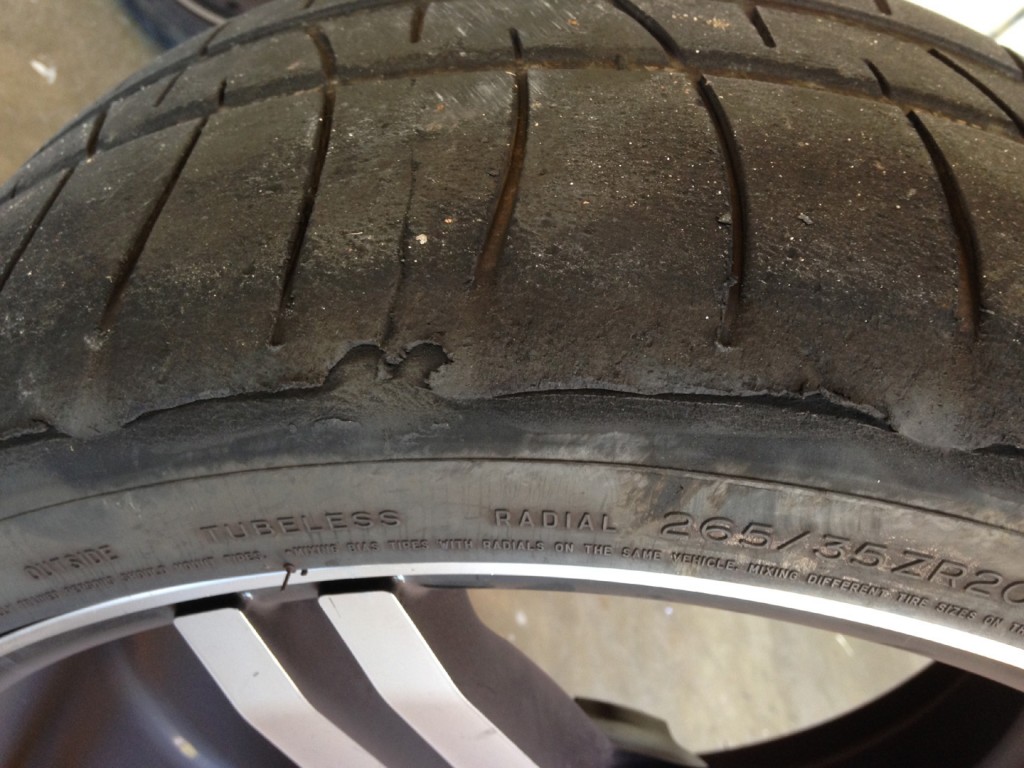
- Using a higher tire pressure will alleviate some of the wear but it will ultimately succumb to the car’s weight. Some feathering is normal, but as shown on these photos, these tears are deep and often go down all the way to the cord. Move to racing tires if this is happening to you.
Racing Tires
Racing tires can be found under the Racetrack / Competition Only category at online retailers such as Tire Rack. Our choice of racing tire is the Toyo Proxes R888 @ 285/35ZR-20, grade 100. Finding racing tires for the Tesla Model S can be challenging mainly because of the car’s heavy weight, something not all tires can support. It’s not everyday that you see a 4600+ “race car” tearing it up on the track. There’s only two or three racing tire choices that fit the bill. Of the two choices available, 285 wide 20″ vs. 265 wide 19″, the bigger tires are our favorites. This is what they look like mounted on the car:
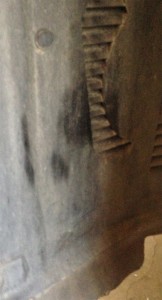 The larger tires work extremely well for racing purposes but be mindful that minor rubbing against the inner plastic fender can occur at approximately 3/4th of the steering wheel turn. It’s not an issue for racing applications because most turns are less than 1/4th of steering wheel turn.
The larger tires work extremely well for racing purposes but be mindful that minor rubbing against the inner plastic fender can occur at approximately 3/4th of the steering wheel turn. It’s not an issue for racing applications because most turns are less than 1/4th of steering wheel turn.
This picture to the right was taken after driving slowly with the steering wheel turned to full lock.
The overall tire diameter is almost the same as the standard Model S tires. There are sufficient horizontal and vertical clearances with the suspension set to Standard.
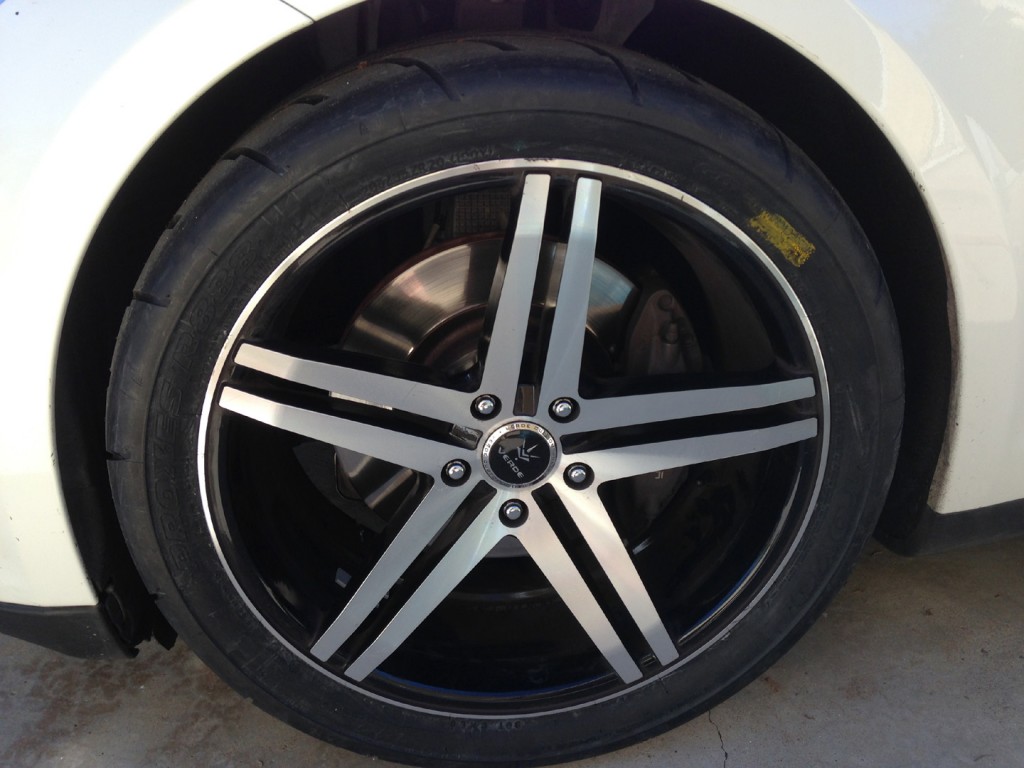
Pros:
- One of the benefits of having a larger racing tires is that the steering wheel lockup issue during banked turns is eliminated. Based on our experiences the Model S steering wheel locks up under high G and until the forces are reduced. Examples of where this has occurred are Fontana turn 1, Laguna Seca turn 9, Sonoma turn 1. We’ve been in contact with Tesla about the issue, but understandably addressing it is low on the priority list since this issue only occurs under extreme driving forces.
- Softer and wider tires provide better traction because of the grippier compound. However a stiffer suspension is usually needed to be able to fully realize the potential. We did not find an improvement in lateral G, but we did notice a longer duration for holding the G.
- One of the main advantages of these tires vs. performance tires is race track durability. They are capable of handling the grueling conditions of racing especially including the heavy weight of the Tesla.
Cons:
- While they are technically street legal (barely), the tires resemble slicks and not suitable for daily driving.
- Parking becomes a difficult task especially if you need to make a full turn.
- Racing tires are very noisy because of the increased friction against ground surfaces.
- Racing tires are not designed for wet conditions. They did surprisingly well on a wet race track surface, but do not repeat our mistake and try driving through standing water.
- And lastly, while these softer, wider, and grippier tires improve traction on a race track, more energy is needed to move rotate them. How much more? A whopping 20%. We registered 390 Wh/mile of street driving using the racing tires vs. 320 Wh/mile when using standard tires.
- The tires need to be transported to the track.
- At $380 per tire, racing tires are much more expensive than performance tires. They also tend to wear down much faster.
We’ll be gathering some more track data over time using our racing 285/35ZR-20 Toyo Proxes R888. We’ll be monitoring the effects these racing tires have on energy usage, lateral Gs and of course our lap times!

Lifestyle
Tesla Model S Plaid battles China’s 1500 hp monster Nurburgring monster, with surprising results
There is just something about Tesla’s tuning and refinement that makes raw specs seem not as game-changing.
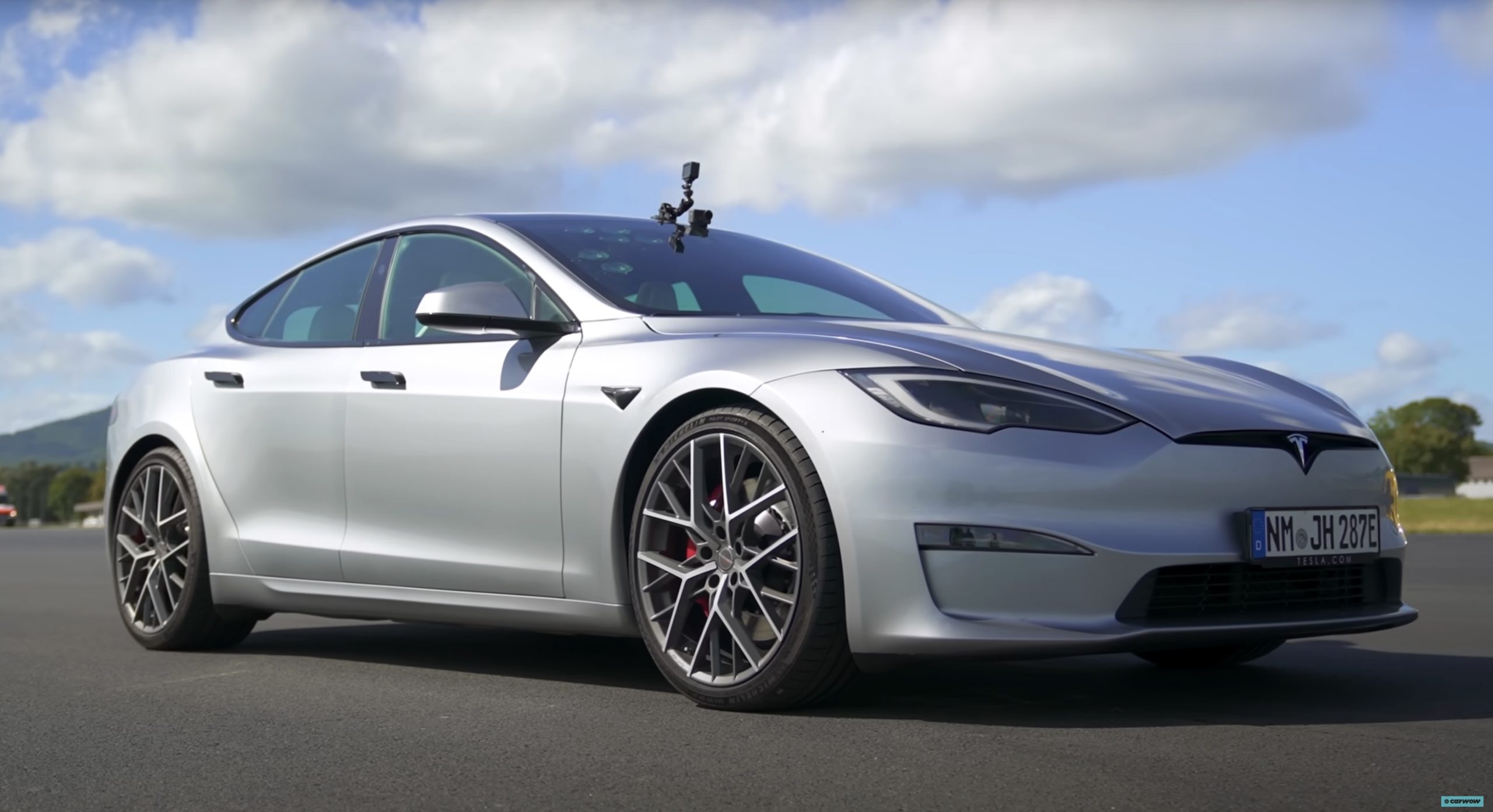
The Tesla Model S Plaid has been around for some time. Today, it is no longer the world’s quickest four-door electric sedan, nor is it the most powerful. As per a recent video from motoring YouTube channel Carwow, however, it seems like the Model S Plaid is still more than a match for some of its newer and more powerful rivals.
The monster from China
The Xiaomi SU7 Ultra is nothing short of a monster. Just like the Model S Plaid, it features three motors. It also has 1,548 hp and 1,770 Nm of torque. It’s All Wheel Drive and weighs a hefty 2,360 kg. The vehicle, which costs just about the equivalent of £55,000, has been recorded setting an insane 7:04.957 at the Nurburgring, surpassing the previous record held by the Porsche Taycan Turbo GT.
For all intents and purposes, the Model S Plaid looked outgunned in Carwow’s test. The Model S Plaid is no slouch with its three motors that produce 1,020 hp and 1,420 Nm of torque. It’s also a bit lighter at 2,190 kg despite its larger size. However, as the Carwow host pointed out, the Model S Plaid holds a 7:25.231 record in the Nurburgring. Compared to the Xiaomi SU7 Ultra’s record, the Model S Plaid’s lap time is notably slower.
Real-world tests
As could be seen in Carwow’s drag races, however, Tesla’s tech wizardry with the Model S Plaid is still hard to beat. The two vehicles competed in nine races, and the older Model S Plaid actually beat its newer, more powerful counterpart from China several times. At one point in the race, the Xiaomi SU7 Ultra hit its power limit due to its battery’s temperature, but the Model S Plaid was still going strong.
The Model S Plaid was first teased five years ago, in September 2020 during Tesla’s Battery Day. Since then, cars like the Lucid Air Sapphire and the Xiaomi SU7 Ultra have been released, surpassing its specs. But just like the Model Y ended up being the better all-rounder compared to the BYD Sealion 7 and the MG IM6, there is just something about Tesla’s tuning and refinement that makes raw specs seem not as game-changing.
Check out Carwow’s Model S Plaid vs Xiaomi SU7 drag race video below.
Lifestyle
500-mile test proves why Tesla Model Y still humiliates rivals in Europe
On paper, the BYD Sealion 7 and MG IM6 promised standout capabilities against the Model Y.
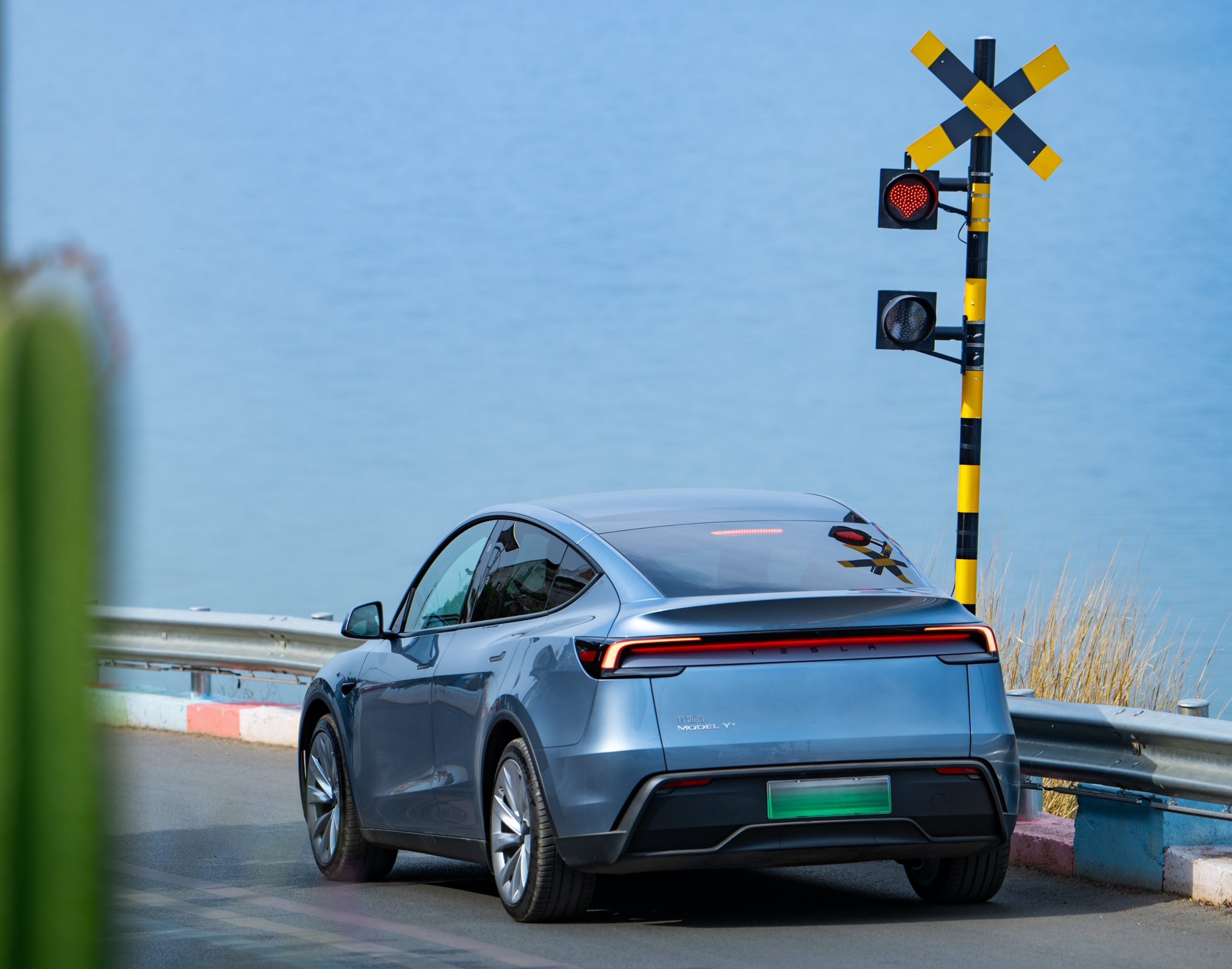
BYD is seeing a lot of momentum in Europe, so much so that mainstream media has taken every opportunity to argue that the Chinese automaker has beaten Tesla in the region. But while BYD sales this year in Europe are rising and Tesla’s registrations remain challenged, the raw capabilities of vehicles like the Model Y are difficult to deny.
This was highlighted in a 500-mile challenge by What Car? magazine, which showed that the new Tesla Model Y is more efficient, cheaper to run, and more reliable than rivals like the BYD Sealion 7, and even the nearly 400 KW-charging MG IM6.
Range and charging promises
On paper, the BYD Sealion 7 and MG IM6 promised standout capabilities against the Model Y. The Sealion 7 had more estimated range and the IM6 promised significantly faster charging. When faced with real-world conditions, however, it was still the Model Y that proved superior.
During the 500-mile test, the BYD nearly failed to reach a charging stop, arriving with less range than its display projected, as noted in a CarUp report. MG fared better, but its charging speeds never reached its promised nearly-400 kW charging speed. Tesla’s Model Y, by comparison, managed energy calculations precisely and arrived at each stop without issue.
Tesla leads in areas that matter
Charging times from 25% to 80% showed that the MG was the fastest at 17 minutes, while Tesla and BYD were close at 28 and 29 minutes, respectively. Overall efficiency and cost told a different story, however. The Model Y consumed 19.4 kWh per 100 km, compared to 22.2 for MG and 23.9 for BYD. Over the full trip, Tesla’s charging costs totaled just £82 thanks to its supercharger network, far below BYD’s £130 and MG’s £119.
What Car? Magazine’s testers concluded that despite BYD’s rapid sales growth and the MG IM6’s seriously impressive charging speeds, Tesla remains the more compelling real-world choice. The Model Y just offers stability, efficiency, and a proven charging infrastructure through its Supercharging network. And as per the magazine’s hosts, the Model Y is even the cheapest car to own among the three that were tested.
Watch What Car? Magazine’s 500-mile test in the video below.
Lifestyle
Tesla Cybertruck slapped with world’s least intimidating ticket, and it’s pure cringe
One cannot help but cringe and feel second-hand embarrassment at the idea of a person just driving around with a stack of these babies.
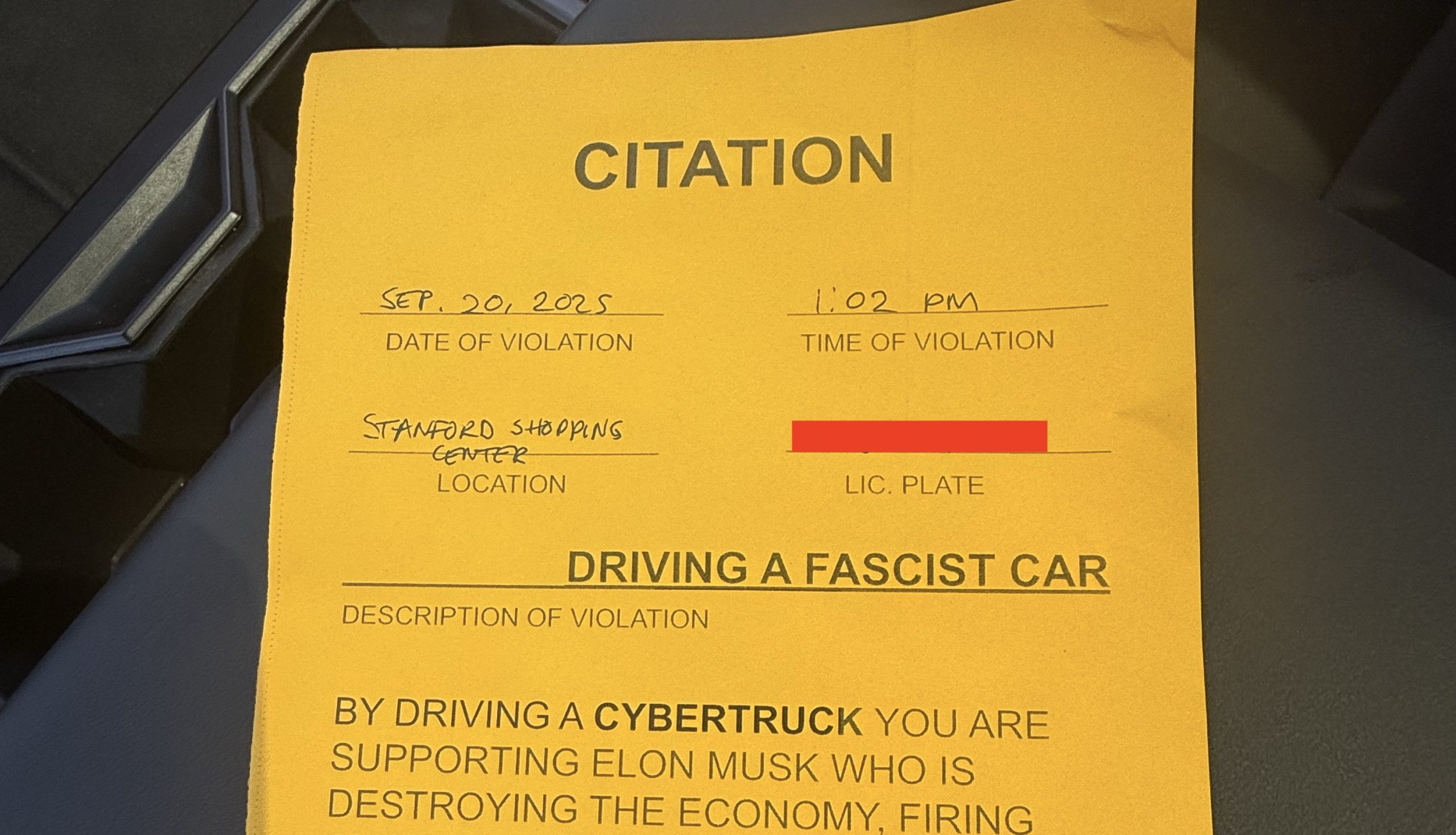
A Cybertruck parked at Stanford Shopping Center in California was recently hit with what might be the most try-hard piece of paper ever slipped under a wiper blade: a “fake citation” accusing the driver of supporting a “fascist car.”
The note, shared on X by Tesla staff program manager Ryan Torres, quickly made the rounds on X, where it quickly gained attention as an example of how not to protest.
The world’s least intimidating ticket
According to the citation, the supposed “violation” was “driving a fascist car.” The remedial action? Take the bus, call an Uber, or ride a bike. The note also dubbed Elon Musk a “chainsaw-wielding Nazi billionaire.” Now, protests against Tesla and Elon Musk have become commonplace this year, but one cannot help but cringe and feel second-hand embarrassment at the idea of a person just driving around with a stack of fake anti-Tesla/Musk citations.
Torres pointed out the irony himself in his post on X. Tesla currently employs over 140,000 Americans, and SpaceX has put the U.S. firmly back at the top of space technology. As Torres put it, maybe the person behind the world’s least intimidating ticket should “read a book on innovation before vandalizing” other people’s property.
Peak performative clownery
Not to mention that the fake ticket’s logic collapses under its own weight. EVs like the Cybertruck are literally designed to reduce emissions, not “destroy the economy.” If anything, Tesla has bolstered the United States’ economy by fueling jobs in engineering, manufacturing, and clean energy. It’s not the first time a Tesla has been the target of vandalism or politically charged notes, but this one stands out for sheer cringe value.
Torres summed it up neatly: “Peak clownery.” On that point, at least, the citation earns full marks. In a way, though, perhaps cringe fake tickets are not as bad as the literal firebombs that were being thrown at Tesla stores and cars earlier this year because some critics were gleefully misinformed about Elon Musk.
